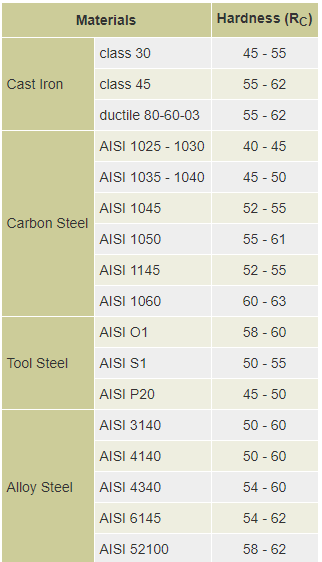Common Hardening Processes
The selective hardening processes can be done by flame, induction, electron beams, and laser beam. Flame hardening is widely used in deep hardening for large substrates. Induction hardening is suitable for small parts in production lines. Electron beam and laser beam hardening are sometimes not distinguished from those in hardfacings or high-energy treatments. These processes are applicable only to steels that have sufficient carbon and alloy content to allow quench hardening.
These hardening treatments do not significantly change the dimensions. The depth of hardening can have a wide range of variety from 250 µm (.01 in) to the whole section depth. However, in the whole section case, the section must be thin, less than 25 mm (1 in), or small, since the hardening processes require a rapid cooling of materials; for instance, cooling AISI 1080 carbon steel from about 870 ºC (~1600 ºF) to below 530 ºC (~1000 ºF) within one second. This is difficult to achieve in large workpieces. In large sections, only the surface can be hardened. The applications of hardening can easily be found in dowel pins, springs, knife blades, and surgical blades.
See also direct hardening, selective hardening, and diffusion hardening in the heat treatments section for further discussion.
Common Materials Treated by Hardening Processes
Some of most common heat treated harden materials, such as cast irons, carbon steels, tool steels, and alloy steels, are list as follows. For other materials, please refer to the alloy pages.


